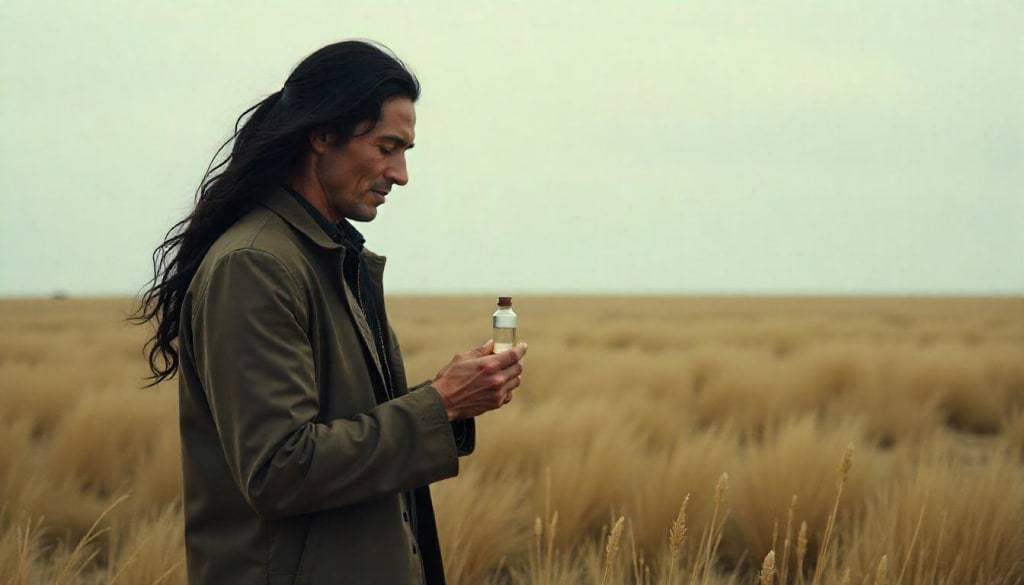The Ghostly Scent of Forgotten Flowers
Last summer, I wandered through my grandmother’s overgrown garden, the kind where weeds and wildflowers wage a quiet war. There, tucked beneath a tangle of ivy, I caught a whiff of something fleeting—a scent so delicate, so strangely familiar, it stopped me cold. It wasn’t the lavender she’d planted decades ago or the roses climbing the fence. It was… something else. Like a memory I couldn’t place. Have you ever smelled something that felt like it belonged to someone else’s life?
That moment got me thinking about flowers we’ll never smell again—extinct blooms like the Hibiscadelphus wilderianus, a Hawaiian flower gone forever by the 1900s, or the Orbexilum stipulatum, last seen in Kentucky before it vanished. These plants didn’t just die out; they took their scents with them, fragrances that once drifted through ancient forests or clung to the robes of long-gone travelers. And here’s the wild part: what if those lost smells could still live somewhere, encoded in our DNA, whispering memories our ancestors once knew?
The Science of Scent and Memory
Smell is a time machine. It’s the only sense wired directly to the brain’s limbic system, the part that handles emotions and memories. That’s why a whiff of fresh-baked cookies can yank you back to your childhood kitchen. But could it go deeper? Some researchers think so. Studies on epigenetics—how experiences alter gene expression—suggest that memories, or at least their imprints, might pass through generations. In 2013, a study at Emory University showed mice trained to fear a cherry-blossom-like scent passed that fear to their pups, even though the pups never smelled it themselves. The trigger? Changes in their DNA.
Now, I’m no scientist—wait, did I just sound like one?—but this blows my mind. Could the fragrance of a flower my great-great-grandmother loved, one that’s extinct now, still linger in some corner of my genetic code? Not the smell itself, but the echo of her joy when she inhaled it? It’s poetic, sure, but there’s evidence backing this up. Olfactory receptors, the proteins that detect smells, make up about 3% of our genome. That’s a lot of real estate for something as “frivolous†as scent. Evolution doesn’t mess around—if we’re carrying that much olfactory baggage, it’s probably doing something.
A Garden Lost to Time
Picture this: a forest 200 years ago, alive with flowers we’ll never know. The Cry Violet, wiped out in Ohio by the 1930s, might’ve smelled like rain-soaked moss or sharp citrus. Or the Franklinia alatamaha, a tree-flower combo last seen in the wild in 1803, described as having a honeysuckle-like sweetness. These weren’t just plants; they were moments. Someone, somewhere, buried their face in those petals and felt alive. And just like that—poof!—they’re gone.
I can’t help but wonder what we’ve lost. Not just the flowers, but the stories they carried. My grandmother used to say every plant had a purpose, even if it was just to make you pause and breathe. She’d point to her marigolds, their spicy tang filling the air, and swear they kept bad spirits away. Maybe she was onto something. Maybe those extinct flowers held secrets—medicinal, spiritual, or just plain beautiful—that we’ll never crack.
Could We Bring Them Back?
Here’s the thing: science might let us smell those ghosts. De-extinction projects, like the ones reviving the passenger pigeon or the woolly mammoth, could theoretically resurrect lost plants. Botanists at places like the Royal Botanic Gardens, Kew, are already working to save endangered species, and some are eyeing ancient seeds preserved in permafrost or museum vaults. DNA sequencing could even let us rebuild a flower’s scent profile, molecule by molecule, without growing a single petal.
But would it be the same? A lab-made fragrance might mimic the Hibiscadelphus, but it wouldn’t carry the weight of a breeze that once swept through a Hawaiian valley. It’s like recreating your mom’s recipe from a cookbook versus tasting it from her chipped blue bowl. The soul’s missing. Still, I’d take a sniff, wouldn’t you?
The Scent of Who We Were
Back in that garden, I never figured out what I smelled. Maybe it was just my imagination, or maybe a stray seed from some long-dead flower decided to bloom one last time. Either way, it felt like a gift—a reminder that we’re tied to the past in ways we can’t always see. Our DNA isn’t just a blueprint; it’s a scrapbook, holding fragments of lives and landscapes we’ll never know.
So, next time you catch a scent that stops you in your tracks, pay attention. It might be more than just a smell. It might be a piece of your story, or someone else’s, reaching out across time. What’s the strangest scent you’ve ever chased, and where did it take you?


